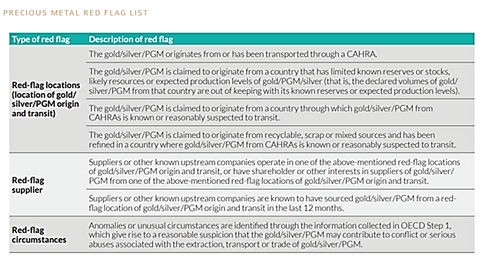Purpose
In the context of the 2019 COP and 2017 CoC, due diligence refers to the reasonable investigation undertaken by a business to identify and assess risks related to conflict-affected and Red Flag risk areas (CAHRAs). Due diligence provides companies with the information they need to identify risks in order to prevent or mitigate adverse impacts associated with their sourcing practices. Companies that source or use minerals from CAHRAs can also play an effective role in supporting livelihoods, economic growth and prosperity, and due diligence enables this. In all cases, it is an active process which results in a responsible sourcing program that is:
- Ongoing: seamlessly and effectively integrated into a company’s management systems and daily processes.
- Proactive: designed and implemented to identify and mitigate risks to prevent negative outcomes.
- Reactive: able to respond promptly to risks (both actual and potential).
- Risk based: with a level of detail and effort that matches the potential risk in a company’s supply chains.
- Allowing for continuous improvement: companies may be starting with very little understanding of risks in their supply chains and work to improve their systems and understanding over time.
Day’s Jewelers and the suppliers we engage in business with are downstream companies – depending on the position in the supply chain, downstream companies are encouraged to build and/ or exercise their leverage over upstream suppliers who can most effectively and most directly mitigate the risks of adverse impacts. When our suppliers decide to pursue risk mitigation while continuing trade or temporarily suspending trade, the mitigation efforts should focus on suppliers’ value orientation and capability-training to enable them to conduct and improve due diligence performance. Day’s Jewelers will encourage their suppliers to develop and implement due diligence to support responsible souring of all metals, diamonds and colored gemstones.
Risk Assessment and Mitigation Management Systems:
- Day’s Jewelers VP of Merchandising is the person responsible for due diligence process
- Supply Chain policy, publicly available and reviewed annually
- Supplier Agreement Questionnaire, required from new suppliers prior to engaging in a business relationship and all suppliers annually
- Research and information gathered by Day’s Buyers and VP of Merchandising is electronically stored in a secure and confidential manner.
- Grievance mechanism
- Risk Review and Assessment:
How we gather information:
- Supplier Agreement form and invoices that clearly state what information we need
- Collect information directly in meetings with suppliers
- Research from more than 20 online resources to identify conflict affected high risk areas
Mitigation process and possible termination of business relationship:
- If information is not forthcoming, develop a timeline with the supplier to obtain it over an agreed time frame.
- Depending on the severity of the “red flag” or if mitigation efforts with the supplier fail to find a resolution, the VP of Merchandising in agreement with the executive team members, will make the decision whether to continue the relationship with stipulations or cease the business relationship.
Below are three charts showing examples of possible red flags in the supply chain and how we measure the severity of the risk and make decisions on whether to continue the business relationship.
Examples of Red Flags in the Supply Chain:


Identified Risk and Appropriate Response examples:


